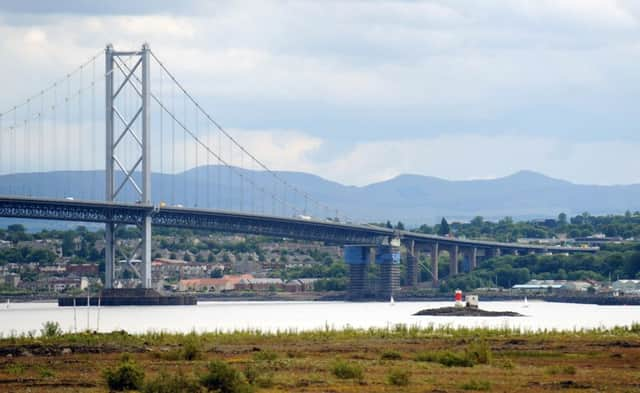Corrosion accelerates on Forth Road Bridge


An investigation is soon to get under way to determine the cause of the breaks within the main east cable.
Since it was installed in August 2006, an acoustic monitoring system on the two main cables has detected 93 wire breaks in total.
Advertisement
Hide AdAdvertisement
Hide AdHowever, since the end of January, engineers have noted 24 wire breaks on just one cable alone.
This acceleration has been recorded near the top of the south-east tower on the east cable.
A dehumidification system to stop wires cracking in the suspension cables, which was installed in 2009, had greatly reduced concerns about their safety.
However, despite this wires within the cables which had been affected by corrosion are still prone to snapping. The scale of the problem has been highlighted in the most recent Forth Estuary Transport Authority (Feta) report submitted to Edinburgh City Council.
Barry Colford, chief engineer and bridgemaster, said: “The main cable acoustic monitoring system is designed to give us early warning of potential problems within the cable.
“I would therefore stress that, while this increase in wire breaks does merit further investigation, there are no immediate safety concerns and the cables still have more than enough strength to do their job.
“The inspection that we are now carrying out is purely to determine whether the recent increase in the rate and concentration of wire breaks is indicative of a longer-term problem.
“Once we know the results of this inspection we will recommend any further action that is required to ensure the bridge remains safe and open to traffic.”
Advertisement
Hide AdAdvertisement
Hide AdEach of the main cables is made up of 11,618 individual steel wires, wrapped into a bundle 60cm in diameter.
Acoustic monitoring uses microphones along the length of the cables to identify the sound of a wire snapping inside.
Extensive corrosion and broken wires were revealed during a 2006 investigation, with engineers estimating a total loss of strength of between 8 and 10 per cent.
Concerns over the suspension cables were a factor in the decision to build the new £1 billion Queensferry Crossing, which is due to open in 2016.
Upon announcing the new bridge, the Scottish Government said: “Despite significant investment and maintenance since it opened in 1964, the current Forth road bridge is showing signs of significant deterioration and is no longer deemed viable as the long-term main crossing of the Firth of Forth.”